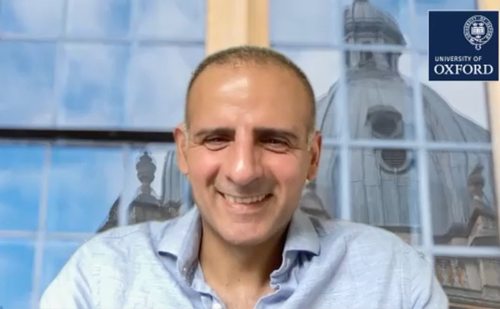Highlights from the 15th annual Complex Cardiovascular Therapeutics: Advanced Endovascular and Coronary Intervention Global Summit (C3), Hilton Bonnet Creek, Orlando, FL, US, 23–6 June 2019 — Focus on hypertension.
The management of hypertension remains a challenge: increasing global obesity, common comorbid chronic illnesses and suboptimal early diagnosis and treatment all contribute to the rising prevalence of high blood pressure.1 Around 40% of the Western population has hypertension and globally the burden of high blood pressure affects over 1.4 billion people.2,3
Hypertension is a leading cause of morbidity and mortality and is the most important modifiable risk factor for cardiovascular events.3,4 However, there remains a lack of consensus on how aggressively high blood pressure should be lowered in order to meet targets.3,4 These targets also vary between guidelines and are further complicated by the different blood pressure readings attained in the clinician’s office and in the patient’s day-to-day life.3,4
In 2017, the American College of Cardiology/American Heart Association Task Force updated its guidance on managing blood pressure.4 At this year’s Complex Cardiovascular Catheter Therapeutics (C3) meeting, Professor Paul Whelton discussed the key recommendations from the updated guidelines.5 The update strongly emphasises the need for accurate measurements. Blood pressure measurement requires rest periods, proper positioning of the patient in a sitting posture, upright, with feet on the ground, using a valid instrument with an appropriate cuff size; averaging of results is also essential in minimising random errors. Poor accuracy of measurement leads to misdiagnosis and missed treatment opportunity.
People with a systolic blood pressure (SBP) of 130–139 mmHg (or a diastolic blood pressure [DBP] of 80–89 mmHg) were re-categorised from ‘pre-hypertension’ to ‘stage 1 hypertension’, giving a more advanced diagnosis that comes with an emphasis on non-pharmaceutical intervention. In this range, lifestyle adjustment can yield a benefit of 7–10 mmHg and should be the primary approach in patients at low risk of atherosclerotic cardiovascular disease; in those at higher risk, lifestyle change with additional medication should be considered.4 Lifestyle modification remains focussed around keeping body weight on target, maintaining a healthy diet, limiting sodium intake and increasing dietary potassium intake, limiting alcohol intake and ensuring cardiovascular exercise. Medication should focus specifically on lowering blood pressure, and the guidelines recommend long-acting diuretics, calcium channel blockers, angiotensin receptor blockers and angiotensin converting enzyme inhibitors.4
The American College of Cardiology/American Heart Association 2017 guideline update has lowered the recommended target blood pressure from previous versions, suggesting that <140/90 mmHg is initially attained, after which (and depending on the patient’s health), <130/80 mmHg is targeted. If treatment is well tolerated, lower unspecified targets can be sought. In older patients, the updated guidelines suggest that a practical approach is taken, but that this elderly population is broadly treated in line with the wider population – aiming for <130/80 mmHg where possible.4 Acknowledging that individual country or practice guidelines blood pressure targets can vary, there is a recommendation to recognise the commonalities in guideline advice and the intentions of treatment, rather than focus on the differences to the point of confusing physicians and their patients, and potentially delaying effective treatment.5
Treatment-resistant hypertension (TRH) is defined as hypertension that requires four or more antihypertensive agents to maintain target blood pressure, or a state of uncontrolled blood pressure while receiving three antihypertensives.6 It is important when diagnosing TRH that ‘pseudo-resistance’ is excluded – this arises from improper measurement, use of interacting medications, the ‘white coat’ effect and non-adherence to prescribed antihypertensive treatment.6 It is estimated that some form of TRH may affect up to 20% of hypertension cases, but this is difficult to predict with certainty given issues with control and pseudo-resistance.7,8
Compared with treatment-sensitive hypertension, TRH has a 30–90% greater risk of stroke, myocardial infarction, heart failure and cardiovascular and all-cause death, along with elevated risk of type 2 diabetes and atrial fibrillation.9 Effective management of TRH begins with accurate measurement of blood pressure. In addition, there may be a benefit of additional home-based monitoring of blood pressure, particularly because it encourages patient engagement with the management strategy. Interventions for TRH centre on lifestyle improvements (low-sodium diet [ideally below 2 g per day] and increased physical activity), removing interfering drugs that may reduce antihypertensive efficacy and optimising the three-drug blood pressure lowering regimen, with particular attention to optimising the diuretic.6 Patients with TRH often require a second- or third-line addition, and these can include aldosterone inhibitors or amiloride.
A non-medication approach to managing TRH is renal artery denervation. Early studies produced mixed results: SYMPLICITY HTN-2 showed a significant decrease in blood pressure versus no intervention in a control group;10 however, SYMPLICITY HTN-3 demonstrated no benefit with renal denervation compared with a sham procedure.11 Findings from these trials increased understanding of renal denervation procedures, providing insight into renal nerve distribution (and therefore sites for more efficacious treatment) and the impact of ablation patterns, and provided a foundation for a second generation of studies. Compared with sham procedure, recent studies have shown a consistent reduction in SBP and DBP for up to 6 months, with the additional benefit of the reductions not being reliant on patient adherence to medication.12 The procedure is relatively safe with a low risk of complications. While long-term results are awaited to demonstrate the durability and magnitude of blood-pressure reduction, renal denervation offers an immediate additional option for the management of TRH. Renal denervation may be of particular benefit to patients who are non-adherent to medication, or for those with uncontrolled blood pressure despite a full antihypertensive regimen, or for patients who cannot tolerate antihypertensive medication. Forthcoming results from second-generation studies (NCT02439749; NCT03614260) may identify other patient populations who could benefit from the procedure, and help to answer outstanding questions: how to test for successful denervation, how much denervation is optimal, and will the blood pressure reductions translate into improved cardiovascular outcomes?
References
- Frohlich ED. Hypertension: our major challenges. Hypertension. 2001;38:990–1.
- Rossi GP. The Challenges of Arterial Hypertension. Front Cardiovasc Med. 2015;2:2.
- Egan BM, Kjeldsen SE, Grassi G, et al. The global burden of hypertension exceeds 1.4 billion people: should a systolic blood pressure target below 130 become the universal standard? J Hypertens. 2019;37:1148–53.
- Whelton PK, Carey RM, Aronow WS, et al. 2017 ACC/AHA/AAPA/ABC/ACPM/AGS/APhA/ASH/ASPC/NMA/PCNA Guideline for the prevention, detection, evaluation, and management of high blood pressure in adults: executive summary: a report of the American College of Cardiology/American Heart Association Task Force on clinical practice guidelines. Hypertension. 2018;71:1269–324.
- Whelton PK. What’s new in the 2017 ACC/AHA BP Guideline. Presented at: Complex Cardiovascular Catheter Therapeutics (C3), Orlando, USA, 23–26 June 2019.
- Carey RM, Calhoun DA, Bakris GL, et al. Resistant hypertension: detection, evaluation, and management: a scientific statement from the American Heart Association. Hypertension. 2018;72:e53–90.
- Jones DW, Clark D, Wofford MR. Prevalence of apparent treatment-resistant hypertension. Hypertension. 2019;73:286–7.
- Judd E, Calhoun DA. Apparent and true resistant hypertension: definition, prevalence and outcomes. J Hum Hypertens. 2014;28:463–8.
- Pepine CJ. Resistant Hypertension: 2019 Update. Presented at: Complex Cardiovascular Catheter Therapeutics (C3), Orlando, USA, 23–26 June 2019.
- Esler MD, Krum H, Sobotka PA, et al. Renal sympathetic denervation in patients with treatment-resistant hypertension (The Symplicity HTN-2 Trial): a randomised controlled trial. Lancet. 2010;376:1903–9.
- Bhatt DL, Kandzari DE, O’Neill WW, et al. A controlled trial of renal denervation for resistant hypertension. N Engl J Med. 2014;370:1393–401.
- Kandzari DE, Böhm M, Mahfoud F, et al. Effect of renal denervation on blood pressure in the presence of antihypertensive drugs: 6-month efficacy and safety results from the SPYRAL HTN-ON MED proof-of-concept randomised trial. Lancet. 2018;39:2346–55.












